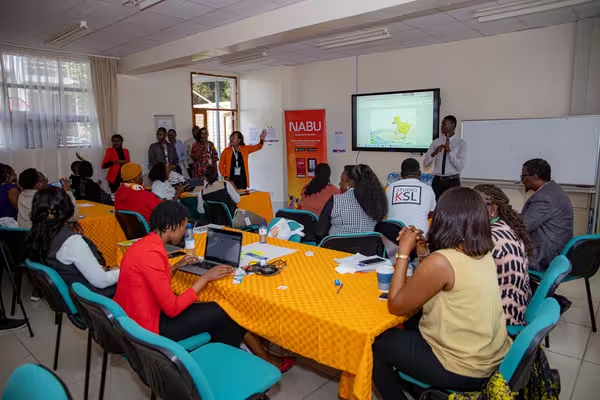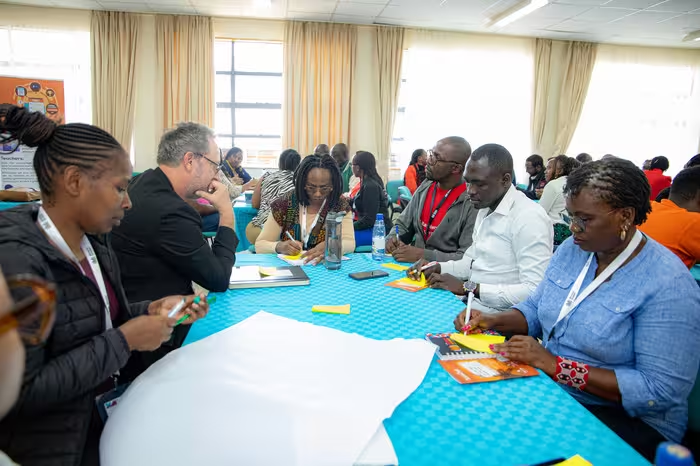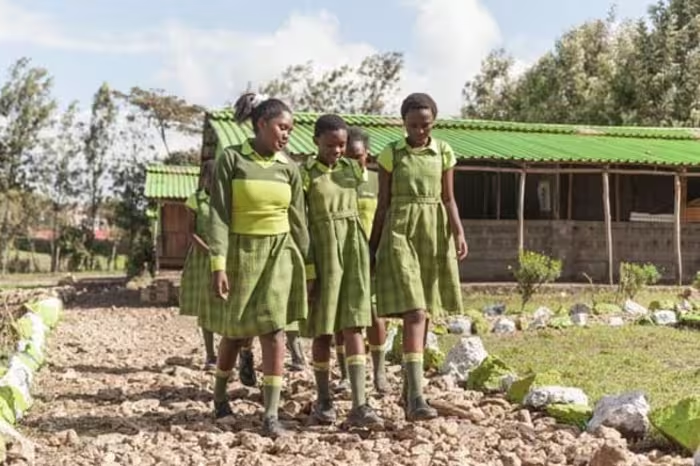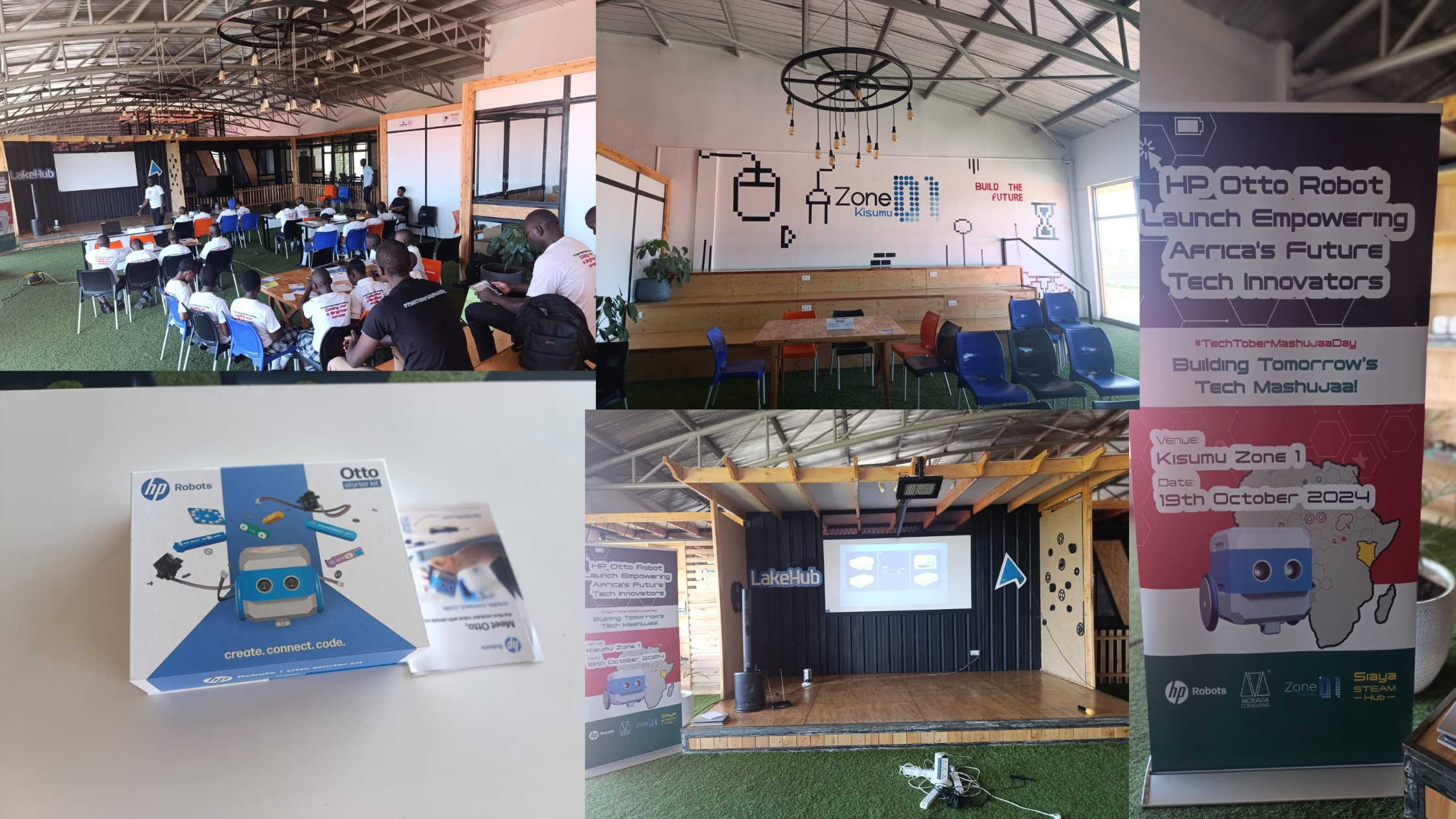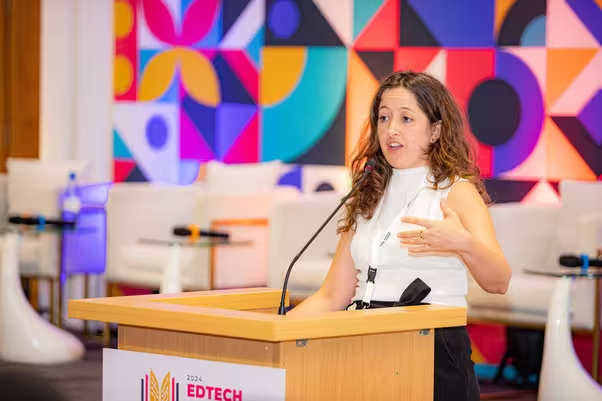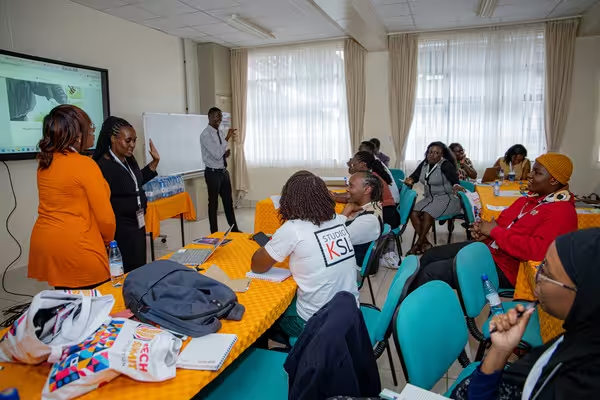
In a bustling Kigali classroom, 10-year-old Belize sits cross-legged, her eyes wide as she swipes through the colorful pages of a digital storybook. It is written in Kinyarwanda, her mother tongue. For Belize, this isn’t just another reading exercise; it’s a moment of pride and connection. Through the vivid tales and illustrations, she finds herself reflected—not just in the language of the text, but in the cultural richness it conveys. She feels empowered.
Belize’s experience is made possible by NABU, an organization featured at the 2024 Edtech Summit. It has been at the forefront of tackling an under-addressed crisis in education today: literacy. Globally, 250 million school-aged children cannot read. The challenge is especially daunting in communities where children don’t have books in their own languages Literacy, particularly in early childhood, is critical to breaking the cycle of poverty. Yet, for millions, learning to read in a language they don’t speak or understand presents an insurmountable barrier.
NABU has a presence in seven countries Afghanistan, Australia, DRC, Haiti, Kenya, Nigeria, Philippines, Romania, Rwanda, Ukraine, and the USA. It has made over 1,100 publications in 25 languages on its digital app, a lifeline to a child who’s learning to read in their mother tongue.
Why mother tongue? Beryl Owyer, program manager at NABU explains, “Children learn best in the language they understand most,”. It’s more than a theory. Studies back her up: kids taught in their first language develop sharper critical thinking and problem-solving skills.
A UNESCO report shows that children who start their education in their mother tongue are more likely to enroll and succeed in school. In addition, learning in the mother tongue helps preserve cultural identity and improve cognitive development.
It’s this idea of representation and accessibility that led NABU to publish books in the mother tongue. Printing books was costly and impractical, especially for families forced to choose between buying a book or food. Most families have smartphones, even in rural areas. Hence the decision to create an app that houses the stories.
“Education,” she says, “isn’t about being smart or dumb. It’s about learning differently.”
Drawing from her own experience as a student she is aware that learning styles vary. Hers required preparation. “I had to read ahead,” she says, recalling her school days. If she didn’t, she would get lost during lessons. But once she did her homework, the teacher’s words reinforced what she already understood.
When children are taught in a foreign language, the cognitive load becomes heavy. Besides trying to figure out a math or science concept, they are learning a language often unused in their daily lives. Students who study in their mother tongue perform better academically because they focus more on grasping concepts without having to decode a foreign language.
In addition, they are less likely to drop out of school.
There is more to it than just grades. Language carries tradition, history, and a sense of belonging. When kids like Belize read in their native language, they aren’t just learning to read, they’re connecting with their roots. This bond fosters pride, belonging, and continuity with the generations that came before, increases a child’s motivation to read, resulting in stronger parental engagement in children’s education, and provides a bridge to reading in English, and other languages.
Achieving Global Competence through Local Languages
NABU’s model of multilingualism—where children first master their mother tongue before tackling other languages—prepares them to thrive in a global world without losing their cultural identity. As one of NABU’s partners in Nairobi puts it, “By fostering multilingualism, we ensure our children are not only literate but globally competent.”
While many may assume that learning in the mother tongue limits global competitiveness, NABU challenges this assumption. NABU’s success stories reveal that building a strong foundation in one’s first language enables children to learn additional languages more effectively. “Countries that excel in education teach in their local languages,” she adds, pointing to Japan, Norway, and Finland.
Telling Stories that Matter
One of NABU’s areas of focus is creating culturally relevant stories. These are stories written and illustrated by local artists, steeped in the unique traditions and values of the communities they serve. NABU isn’t just handing out books. They’re telling stories that matter. With over 250 local artists involved, NABU is supporting literacy while also empowering creative economies.
In Romania, NABU developed content for Ukrainian refugee children. “It’s about making them feel at home, even when they’ve lost everything,” Beryl explains.
Children see themselves not just in the stories but in the illustrations. “Our children are problem solvers,” Beryl insists, noting that the stories reflect this natural curiosity and resilience.
Complementing Digital Solutions
While digital books are cheaper to produce and can be accessed anywhere in the world, not every child can lay his hands on a digital device. That’s why NABU has partnered with organizations like HP to produce physical copies of these books, ensuring that even without a screen, the stories—and their impact—reach every child.
To touch even more lives, they have worked with NGOs and governments in Haiti, to train 2,000 Reading Ambassadors.
Working through Obstacles
The journey has not been easy. Many African countries, shaped by colonial histories, prioritize English, French, or Portuguese in their education systems. These dominant languages often overshadow indigenous languages, leaving little room for mother tongue education.
In Mali, for instance, French dominates official communication, while rural students speak local languages like Bambara. NABU’s bilingual program in Mali, blending French with the mother tongue, has led to better retention rates and student performance
Many parents, influenced by the promise resist mother tongue education, believing English or French will give their children better economic opportunities. NABU works to shift this perception by demonstrating that literacy in the mother tongue not only enhances academic achievement but also lays the groundwork for fluency in global languages.
The Road Ahead
Despite NABU’s successes, challenges persist. Developing books in multiple languages requires substantial resources. Technology, while essential for distribution, often requires reliable internet access and smartphones, which are not universally available. Moreover, governments and policymakers must prioritize mother tongue education to ensure that NABU’s work isn’t just a stopgap but a sustainable solution.
In Kenya, for example, NABU has partnered with government agencies and organizations like Girl Rising and Save the Children to advocate for inclusive policies that support mother tongue education. NABU’s vision is to provide every child with equitable access to literacy by 2030, an ambitious goal that requires collective action from governments, NGOs, communities, and individuals.
By championing mother tongue education, NABU hopes to raise a generation of confident, culturally rooted, and globally competent individuals.
For schools, NABU is developing a web reader, accessible via a browser, allowing teachers to use projectors and laptops to bring stories to life in the classroom. The key, Beryl notes, is to personalize the experience. Using AI, NABU hopes to tailor reading suggestions to each child’s level, pushing them from early readers to independent ones who devour books without prompting.
As Beryl speaks, it is clear that this isn’t just about nostalgia —it’s about the survival of identity for future generations. “If we don’t put our languages in a format that can live longer,” she says, “what will happen to your child, your grandchild, or mine? They won’t speak our native tongues, and what does that do? It kills our languages. And yet, that’s our identity.”
Beryl dreams of a future where AI could help democratize content creation, allowing authors from every corner of Kenya to create and share stories in their native languages.
